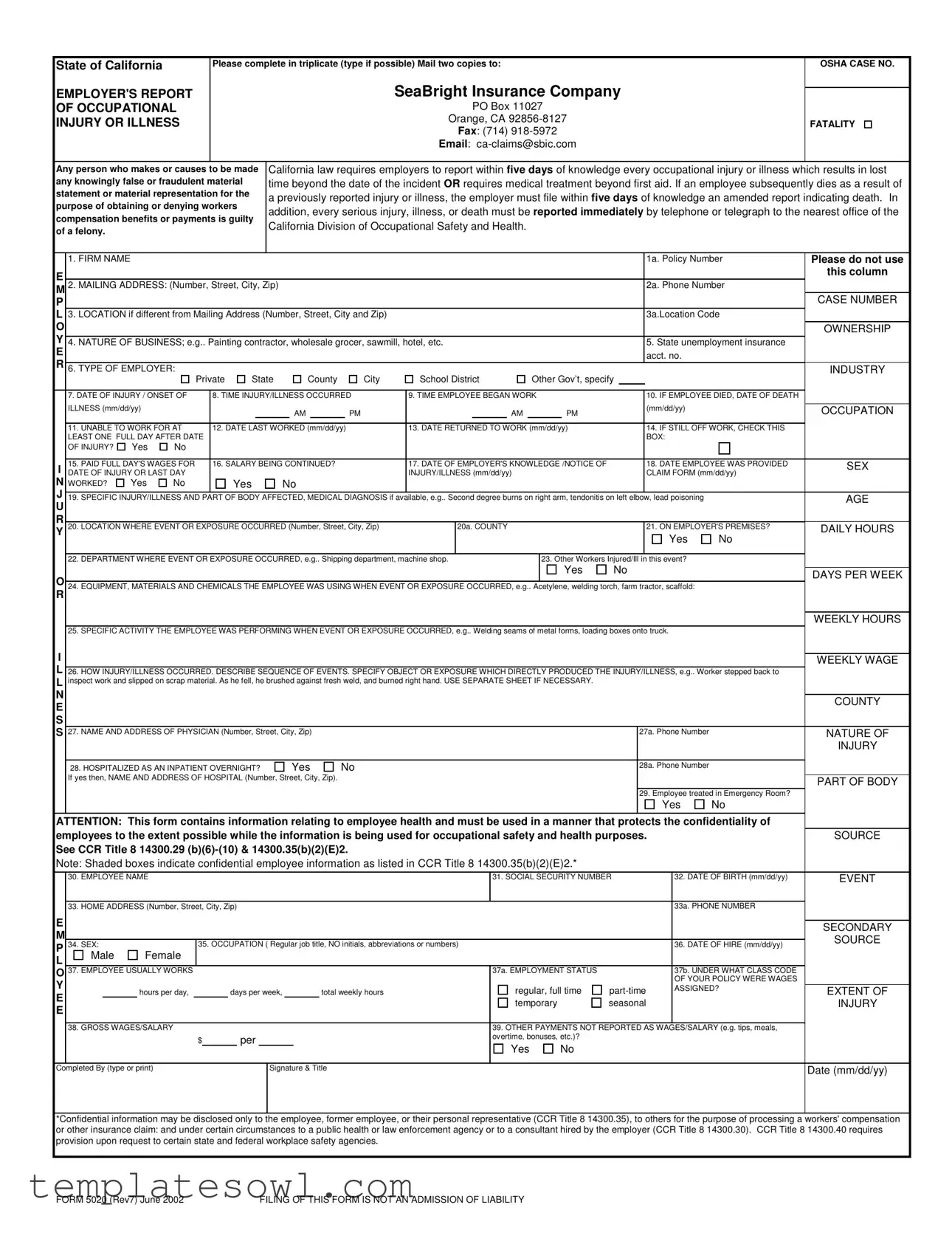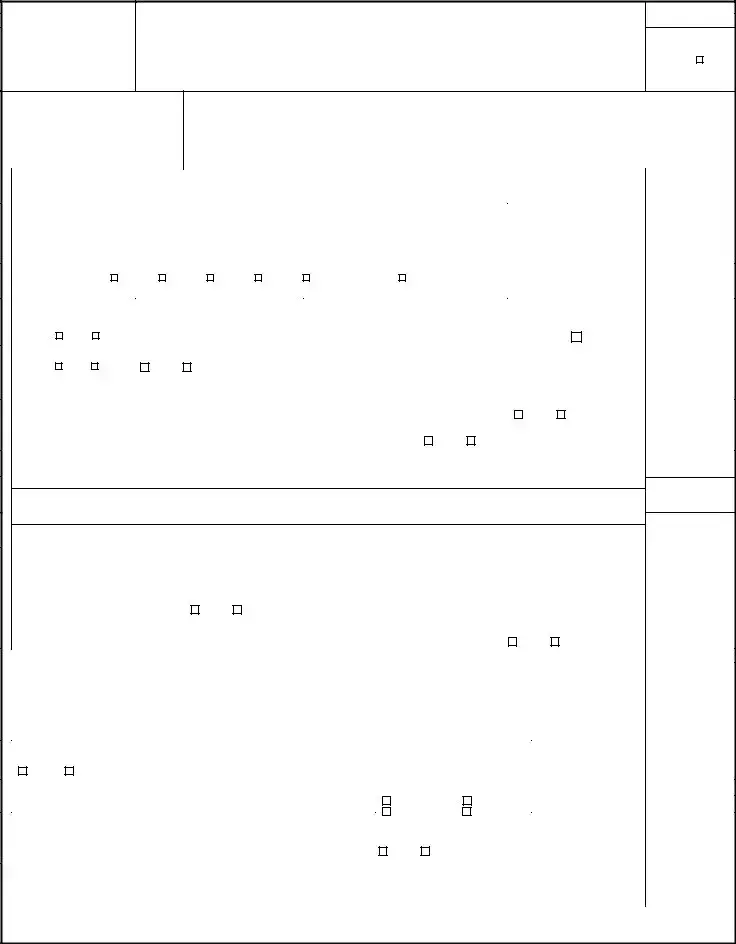Filling out the 5020 California form can be a straightforward process, but common mistakes can lead to complications down the road. One of the most frequent errors is failing to report the occurrence within the required timeline. California law mandates that employers must submit the form within five days of becoming aware of the occupational injury or illness. Neglecting this could result in penalties or delays in the claims process.
Another common mistake is providing incorrect or incomplete information about the employee. Filling in the employee's name, social security number, and date of birth should be done with care. Mistakes in these sections can cause significant issues, including delays in payments or denials of claims. It's crucial to double-check these details before submission.
Many people also struggle with accurately describing the nature of the injury or illness. It’s not enough to simply state that the employee got hurt; providing a detailed description, including specific injuries and the part of the body affected, is essential. A lack of detail can make it harder for claims to be processed correctly.
Missing the location of the incident is another frequent oversight. Employers must specify where the injury occurred; this includes the exact address and county. If the injury took place off-site, it’s critical to indicate that clearly to avoid confusion with the claims process.
Another area for mistakes involves reporting on the wages of the employee. Make sure to accurately record their gross wages and any other payments that might not be reported as wages. Incorrect figures can lead to issues such as under-compensation, which can harm the employee's recovery experience.
Failure to check the appropriate box regarding the employee's current status off work is equally important. When filling out whether the employee is still off work, be clear and accurate. If this section is overlooked or answered incorrectly, the processing of benefits may be delayed.
Lastly, forgetting to complete all required fields can derail the entire filing process. Each section of the form, from the firm's name down to the details about the injury, must be filled out comprehensively. Before submitting, it’s wise to review the entire form to ensure all necessary information is included.

